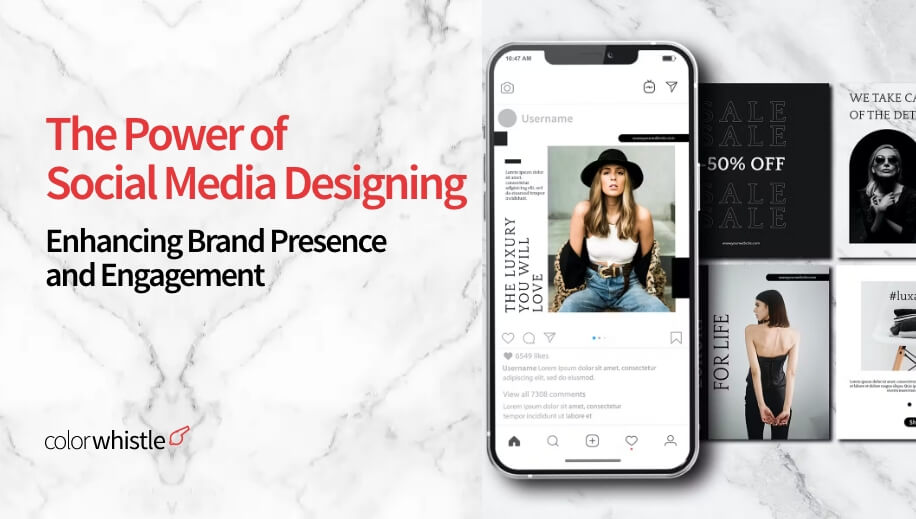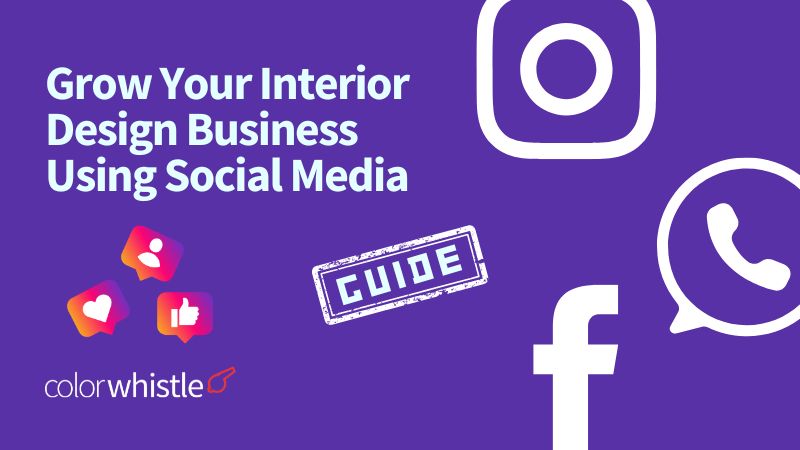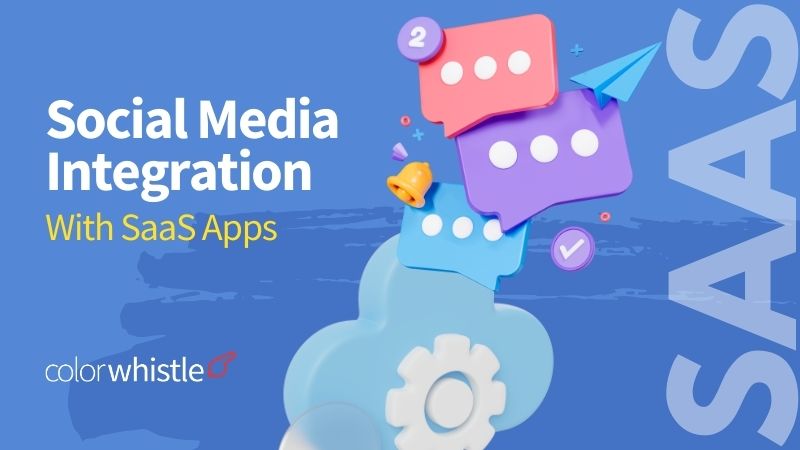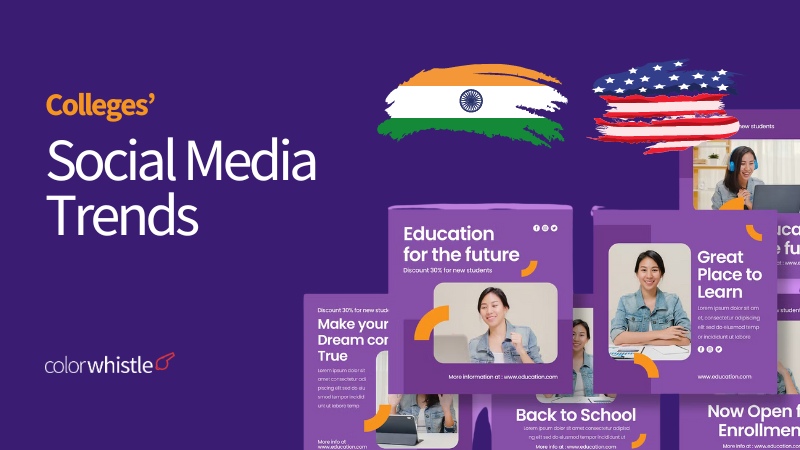Imagine you’re at a party, surrounded by hundreds of people, all vying for attention. How do you stand out in the crowd and make a lasting impression? For businesses, this is the challenge of social media – with millions of posts, tweets, and stories competing for eyeballs every hour, how do you design your online presence to capture attention and drive engagement? The answer lies in creating a compelling visual identity that sets you apart from the noise and resonates with your target audience.
And it’s not just about aesthetics – a study by Adobe found that companies prioritizing design see a 75% increase in brand recognition and a 63% increase in customer engagement. Investing in social media design services is crucial for businesses looking to elevate their online presence.
Did you Know?
94% of people believe their first impression of a company is design-related
What is Social Media Graphic Design?
Social media design is the process of creating tailored images and graphics for platforms like Instagram, Facebook, and Twitter. It’s about painting a canvas that captures attention, engages your audience, and leaves a lasting impression.
Social media platforms serve different purposes for normal people and businesses. Here’s a differentiation between social media for normal people (personal use) and social media for businesses.
Aspect
Social Media for Normal People
Social Media for Businesses
Audience and Connections
Friends, family, acquaintances
Customers, clients, industry professionals, influencers
Content Sharing
Personal updates, thoughts, opinions
Product/service information, industry news, promotions
Privacy Settings
Control over who can view content
Accounts are typically public for maximum visibility
Engagement and Metrics
Likes, comments, and shares from friends
Reach, impressions, likes, comments, conversions
Marketing and Advertising
Limited or non-existent
Strategic marketing campaigns and paid advertisements
Customer Service/Support
Informal interactions with personal connections
Public or private support for customer inquiries
Tone and Voice
Varied and reflective of personal style
Consistent with brand identity and target audience
Analytics and Insights
Limited access to basic engagement metrics
Detailed data on engagement, demographics, and reach
Key Design Principles for Impactful Social Media Graphics
A strong social media presence isn’t just about creativity; it’s built on solid design principles. Mastering a few basics can turn ordinary visuals into scroll-stoppers.
- Color Matters: Colors instantly set the mood and communicate your brand’s tone. Warm tones spark energy, while cooler shades signal calm and trust. Stick to a consistent palette so your posts are instantly recognizable.
- Contrast for Clarity: Good contrast makes text and calls to action stand out. Use light vs. dark or bold vs. subtle to guide attention naturally.
- Typography Speaks: Fonts convey personality: serifs for elegance, sans serifs for modern simplicity. Limit font styles and use size/weight to highlight what matters most.
- Visual Hierarchy: Arrange elements so the most important info catches the eye first, with supporting details following naturally.
- Negative Space: White space isn’t empty; it keeps designs clean, legible, and impactful.
By applying these principles with your brand’s unique flair, your graphics won’t just fit in—they’ll stand out.
Why is Social Media Post Design Important? How it Enhances Brand Presence and Engagement
1. First Impressions Matter
Social media post designs are often the first point of contact between a brand and its audience. A well-designed post immediately captures attention and creates a positive first impression, enticing users to engage further with the content.
2. Brand Identity and Recognition
Consistent and visually appealing design elements, such as logos, colors, and typography, help establish and reinforce a brand’s identity. When users repeatedly encounter cohesive design elements across posts, they develop brand recognition and trust.
Did you Know?
Pinterest is utilized by 86% of millennials for organizing and planning life events.
3. Increased Engagement
Engaging social media graphic designs can significantly boost user interaction with posts. When people find the content visually appealing and relevant, they are more likely to like, comment, share, or click through to learn more about the brand.
4. Conveying Messages Clearly
An effective design helps convey messages and information clearly and concisely. Visual elements can support the post’s text or communicate the main message even without extensive reading, making the content more accessible and shareable.
5. Differentiation from Competitors
In crowded social media spaces, a unique and eye-catching design sets a brand apart from its competitors. It helps the brand stand out and creates a memorable impression on users.
6. Social Sharing and Virality
Well-designed posts are more likely to be shared by users, leading to increased reach and potential for virality. Social sharing extends the post’s visibility beyond the brand’s immediate followers, exposing it to a broader audience.
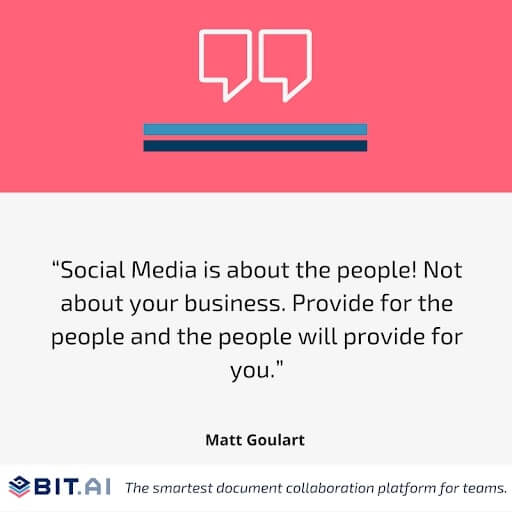
7. Optimal User Experience
An aesthetically pleasing and well-organized design enhances the overall user experience. Users are more likely to engage with content that is visually pleasing and easy to navigate.
8. Supports Marketing Goals
Social media post design aligns with a brand’s marketing objectives. Whether it’s promoting a product, driving traffic to a website, or building brand awareness, an effective strategy reinforces these goals and enhances the chances of success.
9. Ad Performance Improvement
In the case of paid social media advertising, a visually appealing design can improve ad performance and click-through rates, ensuring a better return on ad spend.
10. Adapting to Different Platforms
Every social media platform comes with its unique design prerequisites and constraints. By tailoring post designs to fit each platform’s specifications, brands can optimize their content’s visibility and impact.
11. Emotional Connection
Social media design can build a strong emotional bond with your audience, leading to loyalty and support. By tapping into feelings, you can strengthen your relationship with followers and motivate them to share your content.
12. Storytelling
Successful social media design tells a story highlighting your brand’s values, purpose, and personality. You can draw in your audience and make your brand more relatable by using visuals and narrative styles.
13. Consistency
Maintaining a consistent social media design helps strengthen your brand’s identity and message everywhere. A uniform look builds recognition and trust with your audience.
14. Accessibility
Designing social media to be accessible means your content is easy for everyone to use, regardless of their abilities. By keeping accessibility in mind, you can attract a wider audience and not lose out on potential fans.
15. Analytics and Feedback
With social media design, you can track how users interact, gather their opinions, and improve your content approach. Analyzing your design’s success allows you to discover what needs fixing and make your content more effective.
16. Brand Authenticity
True social media design expresses your brand’s distinct voice, tone, and personality. Being authentic to your brand helps you earn your audience’s trust and respect.
17. Influencer and Partnership Opportunities
Effective social media content can catch the attention of influencers and partners that match your brand’s values. By displaying your brand’s style, you can connect with like-minded collaborators and increase your visibility.
18. Crisis Management
Social media design is useful in managing crises by delivering essential information and keeping things transparent. By using clear and simple designs, you can tackle problems swiftly and effectively.
19. Employee Advocacy
Social media design can encourage employee advocacy and amplify your brand’s message. By empowering your employees to share your content, you can increase your reach and build a more personal connection with your audience.
20. Long-term Branding
Having a consistent look on social media supports your branding goals in the long run, positioning your brand as an expert in your industry. A strong visual identity helps leave a lasting impression and reinforces your brand’s values.
Choosing the Right Fonts for Social Media Graphics
Clarity comes first; pick fonts that are easy to read on any screen. Align your choices with your brand’s vibe, whether modern, playful, or classic.
Stick to one or two complementary fonts per design to avoid clutter, and use size variations to create hierarchy (headline first, details second). Always preview on both desktop and mobile to ensure your text stays sharp and noticeable.
Benefits and Best Practices of Cross-Posting
Cross-posting lets your content reach more people with less effort, expanding your brand’s visibility across Instagram, Facebook, LinkedIn, and beyond.
Best Practices:
- Adapt visuals: Resize or crop images for each platform.
- Tailor captions: Match the style, tone, and character limits of each network.
- Time your posts: Share when your audience is most active.
- Track performance: Use analytics to see which platforms drive the best engagement.
Thoughtful cross-posting maximizes reach while keeping content relevant, fresh, and effective for every audience.
Strategies for Planning Social Media Posts for Maximum Impact
Great design only works when paired with smart planning. With the right approach, your posts can stand out and strengthen your brand across platforms.
- Curate Consistent Visuals: Use steady colors, fonts, and layouts to build a recognizable style. Tools like Canva or Adobe Express make this easy.
- Plan with Content Calendars: Organize posts in advance using tools like Trello, Asana, or Hootsuite. Spot trends, schedule around key dates, and keep content balanced.
- Tailor to Each Platform: Adjust visuals and tone for every channel, vertical for Instagram Stories, infographics for Pinterest, professional polish for LinkedIn.
- Logo & Accessibility: Keep logos visible yet subtle, with versions for light and dark backgrounds. Use clear text and high-contrast colors for accessibility.
- Monitor & Refine: Track engagement, double down on what works, and fine-tune your strategy with data-driven insights.
Smart planning keeps your content consistent, relevant, and impactful, helping every scroll stop at your brand.
Optimizing Graphics and Captions for SEO
Optimizing your visuals and captions helps your content get discovered on platforms like Pinterest, Instagram, and TikTok.
Tips for SEO-friendly posts:
- Use relevant keywords: Include terms your audience searches for in captions or subtly on graphics (e.g., “summer fashion” or “DIY crafts”).
- Write descriptive captions: Clear, specific sentences like “5 ways to style midi dresses for spring” perform better than generic text.
- Leverage hashtags: Use relevant and trending hashtags, rotating sets for each campaign.
- Benchmark competitors: Observe which keywords, hashtags, and styles drive engagement in your niche.
- Coordinate collaborations: Ensure partners and influencers include key terms or hashtags to boost reach.
SEO-focused graphics and captions make your content more discoverable, increasing visibility while supporting your broader social media goals.
Tools to Boost Your Social Media Design
You don’t need to be a designer to create eye-catching visuals; plenty of tools make it simple. With drag-and-drop interfaces, ready-made templates, and vast image libraries, you can produce professional graphics in minutes.
- Graphic Design Platforms: Build posts using pre-made layouts, fonts, and elements optimized for each platform.
- Stock Photo Libraries: Access high-quality, royalty-free images and videos to keep visuals fresh.
- Content Planning Tools: Schedule and preview posts to maintain a cohesive, polished feed.
Experimenting with these tools streamlines your design process and ensures a consistent brand look across channels.
Keeping Your Social Media Design Strategies Fresh
Trends change fast, so keep your design adaptable. Explore platforms like Behance, Dribbble, and Pinterest for inspiration, and follow industry leaders or official social accounts to stay updated on new features and formats.
Join webinars or workshops to learn about digital design trends, and don’t hesitate to experiment, whether it’s interactive stories, new color palettes, or typography styles.
Most importantly, listen to your audience. Use their feedback and performance metrics to refine your approach. Small tweaks and periodic reviews will keep your brand current without losing its core identity.
With ongoing learning and experimentation, your social media presence stays fresh, engaging, and ahead of the curve.
Tips for Effective Social Media Engagement:
Respond Promptly
Aim to respond to comments, messages, and mentions in a timely manner. Quick responses show that you value your audience and their input.
Be Authentic and Personal
Engage with your audience in a genuine and personal manner. Use a conversational tone, address users by name, and tailor your responses to their specific inquiries or comments.
Encourage Conversation
Pose open-ended questions, ask for opinions, and encourage users to share their experiences. This fosters conversation and invites engagement from your audience.
Use Visuals
Visuals, such as images, videos, and GIFs, can grab attention and increase engagement. Incorporate visually appealing content in your posts to make them more shareable and captivating.
Run Contests and Giveaways
Organize contests or giveaways that require users to engage with your content, such as liking, sharing, or commenting. This incentivizes engagement and helps spread your brand’s reach.
Monitor Mentions and Hashtags
Keep an eye on mentions and relevant hashtags related to your brand or industry. Engage with users who mention or use those hashtags to join conversations and build connections.
Analyze and Optimize
Regularly analyze your engagement metrics, such as likes, comments, shares, and click-through rates. Understand what types of content and engagement strategies resonate best with your audience and optimize your approach accordingly.,
Recap
The power of social media design services cannot be underestimated in today’s digital age. An effective and well-crafted social media design strategy has the potential to recast a brand’s online presence, driving meaningful engagement and promoting a passionate connection with the audience. Also, social media post design plays a vital role in conveying messages clearly and concisely, allowing brands to effectively communicate their value proposition to the audience. This clarity drives user interactions, such as likes, shares, comments, and click-throughs.
Browse through our ColorWhistle page for more related content and to learn about our services. To get in touch with us and learn more about our services, please visit our Contact Us page.
What’s Next?
Now that you’ve had the chance to explore our blog, it’s time to take the next step and see what opportunities await!

